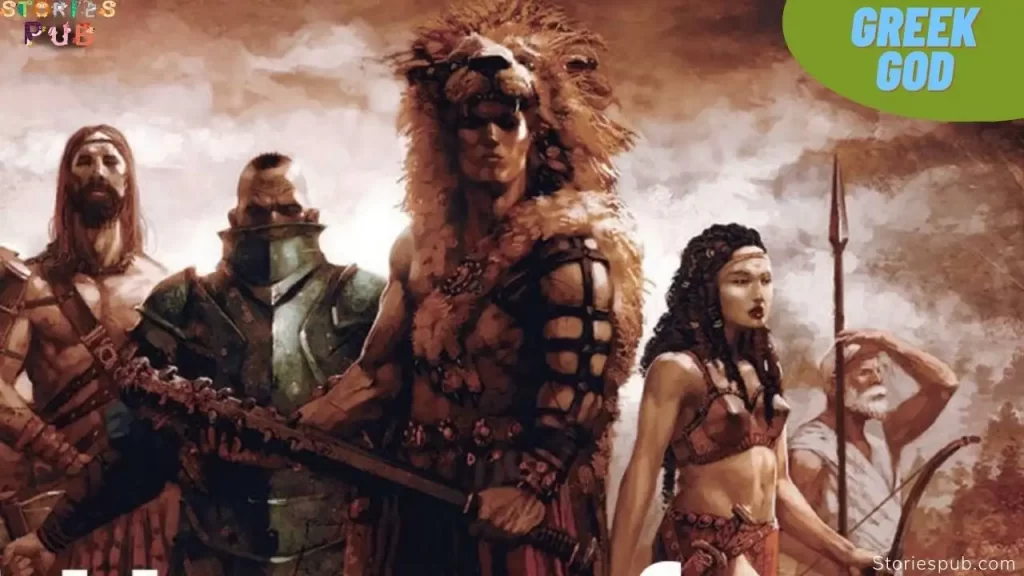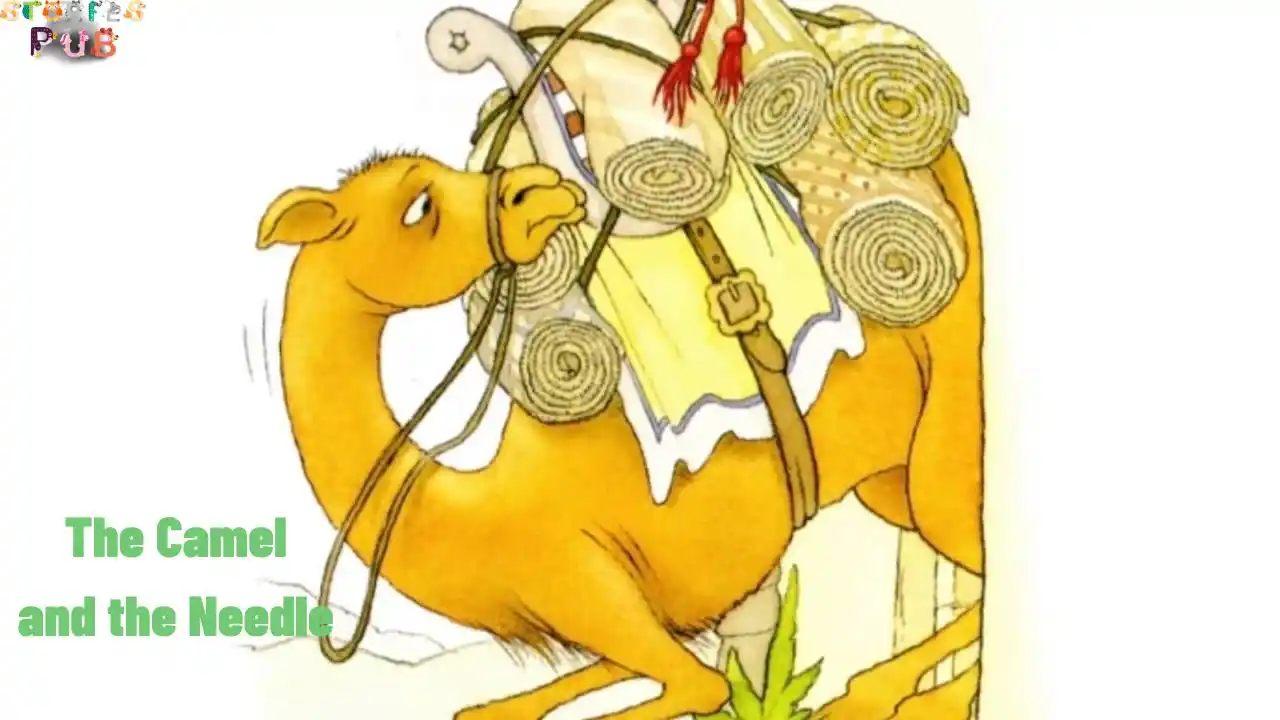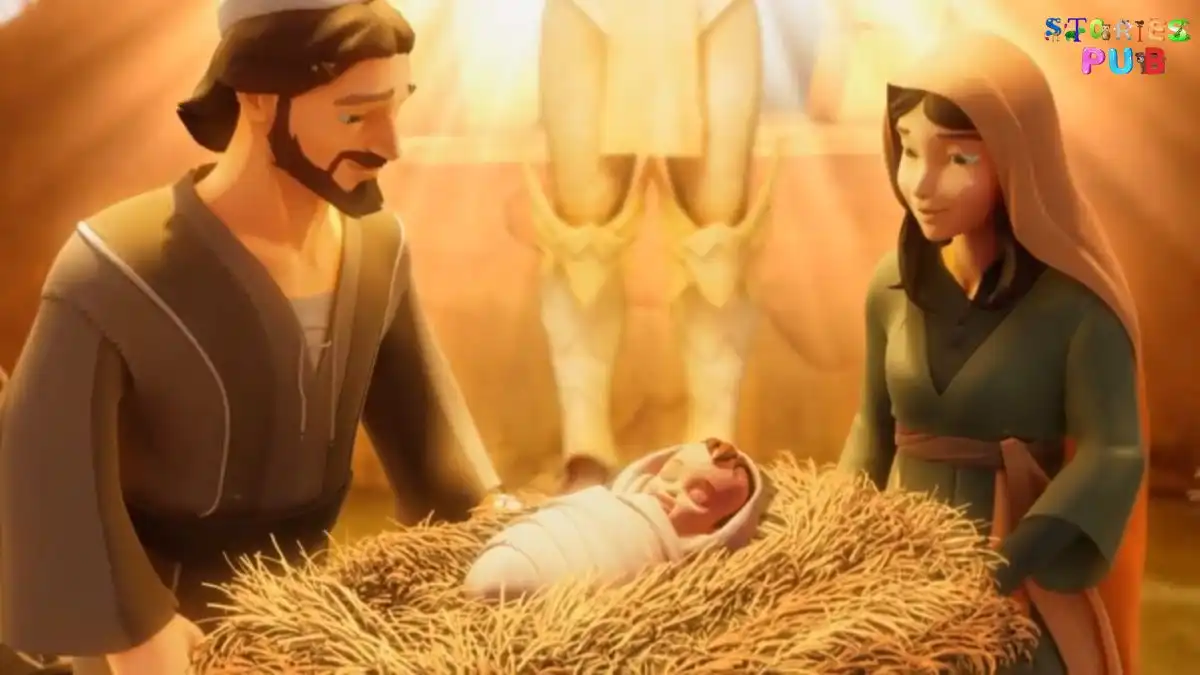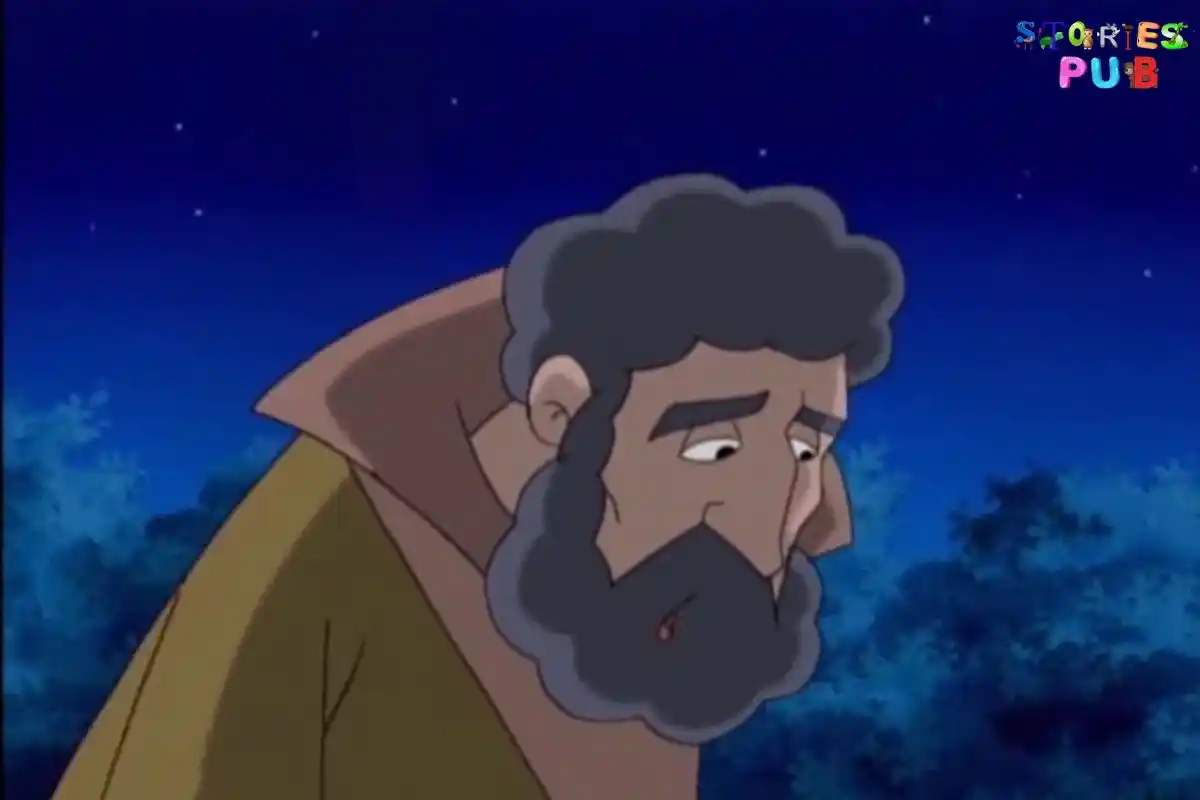Exploring the Epic Tales of Ancient Greek Heroes | Greek Mythology

Ancient Greek heroes and heroines are timeless figures that have captivated the imaginations of people for centuries with their bravery, strength, and cunning. They are characters from ancient Greek mythology that embody the values of honour, courage, and wit. These legendary figures faced challenges and overcame adversity, becoming symbols of strength and resilience.
One of the most iconic Greek heroes is Hercules, also known as Heracles, who is renowned for his incredible physical strength and bravery. Hercules was the son of Zeus, the king of the gods, and a mortal woman, and was known for his “twelve labours,” a series of tasks that he had to complete in order to earn redemption for his past misdeeds. Hercules faced numerous challenges and obstacles in his quest, but he persevered and completed each task with bravery and determination.
Another legendary hero from Greek mythology is Odysseus, who is known for his cunning and wit. Odysseus was the king of Ithaca and one of the Greeks who fought in the Trojan War. After the war, Odysseus faced many trials and tribulations on his journey home. These included being held captive by the sorceress Circe and encountering the wrath of the sea god Poseidon. Through his cunning and wit, Odysseus was able to overcome each challenge and ultimately return home to his kingdom.
In addition to male heroes, Greek mythology also features powerful heroines who faced challenges and overcame adversity. Andromeda was a princess who was saved from a sea monster by the hero Perseus. Ariadne was a princess who helped the hero Theseus defeat the Minotaur, a half-man, half-bull creature. Hippolyta was the queen of the Amazons, a tribe of warrior women, and was sought after by many heroes, including Theseus and Hercules, for her strength and bravery.
These legendary figures serve as a reminder of the human spirit’s enduring power to overcome obstacles and achieve greatness. The myths and stories surrounding Greek heroes and heroines are timeless and continue to inspire people even today. These figures have been depicted in countless works of art, literature, and popular culture, and their influence can be seen in modern-day superheroes and heroines who embody similar values and qualities.
In conclusion, Greek heroes and heroines are timeless figures that continue to inspire and captivate people even today. Through their bravery, strength, and cunning, these legendary figures embody the values of honour, courage, and wit. They serve as a reminder of the human spirit’s enduring power to overcome obstacles and achieve greatness. These myths and stories continue to be passed down from generation to generation, inspiring new generations to strive for greatness and to embody the values of these timeless figures.
Here is a complete list of Greek heroes and heroines who played a major role in building Greek culture.
Achilles, the most famous Greek hero:
Achilles is a legendary figure in Greek mythology, best known as the central character in Homer’s epic poem “The Iliad.” He was the son of the mortal Peleus and the goddess Thetis and was considered the greatest warrior of his time.
Achilles was known for his bravery and skill in battle. He was considered nearly invincible due to his mother dipping him in the River Styx as a baby. This made him invulnerable except for his heel, which she held. This became known as the “Achilles’ heel” and is still used as a metaphor for a weakness in an otherwise strong person.
During the Trojan War, Achilles was instrumental in fighting the city of Troy. However, after being insulted by King Agamemnon, he withdrew from battle in a fit of anger, which allowed the Trojans to gain the upper hand. Achilles was eventually persuaded to return to battle by his best friend Patroclus, who had been killed by Hector, Prince of Troy. Driven by a desire for revenge, Achilles killed Hector in single combat but was eventually killed by an arrow shot by Paris, aided by the god Apollo.
Aeneas, the Greek demigod:
Aeneas is a hero in Greek and Roman mythology, best known as the protagonist of Virgil’s epic poem “The Aeneid.” He was a Trojan prince who survived the fall of Troy and later on to find the city of Rome.
According to myth, Aeneas was the son of the goddess Aphrodite and the mortal Anchises and was considered a demigod. He was known for his piety and devotion to his duties. These duties included the care of his aged father and his duty to find a new city after the fall of Troy.
During the Trojan War, Aeneas fought on the side of the Trojans and was one of the few survivors of the city’s fall. He embarked on a journey to find a new home for himself and his people. He faced many challenges and obstacles along the way, including encounters with the harpies, the sorceress Circe, and the underworld itself.
Eventually, Aeneas arrived in Italy and fell in love with the local princess, Lavinia. However, the local king, Latinus, had already promised her hand in marriage to another prince, Turnus. This led to a war between Aeneas and Turnus, which Aeneas eventually won, fulfilling his destiny to find the city of Rome.
Aeneas is an influential figure in both Greek and Roman mythology, and his story was seen as a foundational myth for the Roman people. He is often depicted as a symbol of duty, piety, and the determination to succeed against all odds. He continues to be a popular subject in literature, art, and music.
Bellerophon, Greek Hero:
Bellerophon is a hero in Greek mythology, best known for his attempts to slay the Chimera, a fire-breathing monster with the body of a lion, the head of a goat, and the tail of a serpent.
Bellerophon was a prince of Corinth who, after committing a crime, was sent by King Iobates to perform a seemingly impossible task: the killing of the Chimera. Bellerophon succeeded in this task with the help of Pegasus, the winged horse given to him by Athena, and became a famous hero as a result.
However, his pride and arrogance eventually led to his downfall. Bellerophon attempted to fly to the heavens on Pegasus, but was struck down by the gods and blinded for his impiety. He lived the rest of his life in shame, wandering as an outcast and eventually dying in misery.
Bellerophon’s story is often seen as a cautionary tale about the dangers of pride and overreaching ambition. Despite his initial heroism, his hubris ultimately led to his downfall and serves as a reminder of the importance of humility. Nevertheless, his story has been retold and adapted in literature, art, and popular culture and continues to be a subject of fascination for audiences today.
Also Read Complete List of Greek God, Their Influence, Limitation, and Power
CASTOR POLLUX DIOSCURI, the sailors’ God:
Castor and Pollux, also known as the Dioscuri, were twin brothers in Greek mythology who were considered demigods and were worshipped as the patron gods of sailors and horsemen. They were the sons of Zeus and Leda, the queen of Sparta, and were also known as the “Sons of Tyndareus.”
Castor was a skilled horseman and warrior, while Pollux was known for his boxing prowess. They were inseparable and always stood by each other, even in death.
According to one myth, Castor was killed in a battle, and Pollux was so heartbroken that he begged Zeus to let him share his immortality with his brother. Zeus granted his request by placing both brothers in the sky as the constellation Gemini.
The Dioscuri were worshipped throughout Greece and were also popular in Rome, where they were associated with the twin gods Romulus and Remus, the legendary founders of Rome. Temples were built in their honour, and they were invoked for protection and guidance, especially by sailors and horsemen.
The story of Castor and Pollux continues to be a popular subject in literature, art, and popular culture. Their image as twin stars in the sky has been a symbol of friendship and loyalty for thousands of years.
Hercules, the mightiest Greek hero:
Hercules is one of the most famous heroes in Greek mythology, known for his exceptional strength and his “twelve labours,” tasks assigned to him as punishment for killing his wife and children in a fit of madness caused by Hera, his stepmother.
Hercules was the son of Zeus and a mortal woman, Alcmene, and was therefore a demigod. Despite his godly heritage, Hercules had a difficult life, plagued by the jealousy and opposition of Hera, who sought to undermine him at every turn.
The twelve labours assigned to Hercules were tasks of high difficulty and danger. These included capturing the Erymanthian boar, cleaning the Augean stables in a single day, and stealing the golden apples from the Garden of the Hesperides. Hercules performed these tasks with remarkable courage and determination and proved himself to be one of the greatest heroes of all time.
After completing the twelve labours, Hercules was offered immortality and a place among the gods on Mount Olympus. However, he declined the offer, choosing instead to live out the rest of his life as a mortal.
Hercules was widely worshipped and revered in the ancient world, and his name became synonymous with strength, bravery, and heroism. He continues to be a popular figure in literature, art, and popular culture, and his story remains an inspiration for people everywhere.
MINOS, the judge of the underworld:
Minos was the legendary king of Crete in Greek mythology. He was known for his wisdom, fairness, and wealth and was said to have been chosen by Zeus to be the ruler of Crete.
Minos was the son of Zeus and Europa, the daughter of the King of Phoenicia. He was said to have been a just and wise ruler who settled disputes among his subjects and brought prosperity to his kingdom.
One of the most famous stories about Minos is his role as judge of the underworld. According to legend, Minos was chosen by Zeus to be the judge of the dead. He would sit in judgement over the souls of the deceased, deciding whether they would be sent to the underworld or reincarnated.
Minos was also known for his cunning and his ability to solve difficult puzzles. He is best known for his role in the myth of Theseus and the Minotaur. This is a creature with the head of a bull and the body of a man that terrorised the people of Crete. Minos was said to have commissioned the labyrinth, a complex maze, to contain the Minotaur. Theseus was said to have defeated the creature and found his way out of the labyrinth with the help of Princess Ariadne.
Minos remains a popular figure in Greek mythology, and his name is still associated with wisdom, fairness, and justice. He continues to be a subject of fascination and inspiration for people around the world.
Also Read Complete List of Greek Goddesses, Their Influence, and Their Power
ORPHEUS, The Musical God:
Orpheus was a legendary musician and poet in Greek mythology. He was renowned for his exceptional musical talent and was said to have been able to charm even inanimate objects with his playing.
Orpheus was the son of the god Apollo and the goddess Calliope. He was trained in music and poetry from a young age and quickly became famous for his exceptional talent. He was said to have the power to charm anything with his playing, from wild animals to inanimate objects. His music was said to have the power to move the hearts of even the gods.
One of the most famous stories about Orpheus involves his journey to the underworld to rescue his wife, Eurydice, who had died from a snake bite. Orpheus was so grief-stricken that he descended into the underworld, where he played his music for the god of the dead, Hades, and his wife, Persephone. His music was so beautiful that it moved the gods to tears, and they allowed him to take Eurydice home to the land of the living. This was on the condition that he did not look back at her until they had both emerged from the underworld. However, Orpheus was unable to resist the temptation to look back, and as a result, Eurydice was lost to him forever.
Orpheus was said to have continued to play music throughout his life. Even after his death, his spirit was said to have returned to the world of the living, where it continued to inspire and move those who heard it. He is remembered as one of the greatest musicians and poets in Greek mythology, and his story remains a popular subject of myth and legend to this day.
Perseus, the cunning hero:
Perseus was a legendary hero in Greek mythology. He was the son of the god Zeus and the mortal woman Danae and was known for his bravery and cunning.
One of the most famous stories about Perseus involves his quest to kill Medusa. This is a monster with snakes for hair who could turn anyone who looked at her into stone. With the help of the gods, Perseus was able to find and defeat Medusa, using a reflective shield to avoid looking directly at her. He then cut off her head and used it as a weapon, eventually giving it to the goddess Athena to place on her shield.
Another famous story about Perseus involves his rescue of Princess Andromeda. Andromeda had been sacrificed by her parents to appease the sea monster Cetus, but Perseus was able to defeat the monster and save the princess. He later married Andromeda and became the founder of a great dynasty.
Perseus is also associated with the story of the Gorgon’s head, which was said to have been used by Athena to create the constellation of the same name.
Perseus remains a popular figure in Greek mythology, and his name is still associated with bravery and cunning. He continues to be the subject of fascination and inspiration for people around the world.
Theseus, the king of Athens:
Theseus was a legendary hero in Greek mythology, best known for his association with the city of Athens. He was said to be the son of the Athenian king Aegeus and the goddess Aethra and was known for his bravery, cunning, and strength.
One of the most famous stories about Theseus involves his defeat of the Minotaur, a monster with the body of a man and the head of a bull. The Minotaur was kept in the labyrinth on the island of Crete and was fed human sacrifices, but Theseus was able to slay the monster and end the practice.
Another famous story about Theseus involves his journey to capture the wild bull of Marathon. Theseus was able to capture the bull and bring it back to Athens. It was said to have been the ancestor of the famous Marathon bull that was used in athletic competitions.
Theseus is also remembered for his association with the city of Athens and the unification of Attica. He was said to have helped consolidate the scattered villages of Attica into a single city. He became the king of Athens and the founder of the city’s great dynasty.
Theseus remains a popular figure in Greek mythology, and his name is still associated with bravery, cunning, and strength. He continues to be the subject of fascination and inspiration for people around the world.
ACTAEON:
Actaeon was a hero in ancient Greek mythology, known for his association with the goddess Artemis and the story of his transformation and death.
According to legend, Actaeon was a skilled hunter who accidentally stumbled upon Artemis while she was bathing in a forest pool. Artemis was so angry at his intrusion that she punished him by turning him into a stag, causing him to be hunted and killed by his own hunting dogs.
The story of Actaeon is often interpreted as a cautionary tale about the dangers of voyeurism and the wrath of the gods. It also emphasizes the transformative power of the natural world.
Actaeon is also associated with the idea of metamorphosis and change. He was transformed from a human into an animal, and his name is often used to refer to a person undergoing a profound change or transformation.
Despite his tragic end, Actaeon remains an influential figure in Greek mythology, and his story continues to be a source of inspiration and fascination for people around the world.
AEGEUS:
Aegeus was a legendary figure in ancient Greek mythology, best known as the king of Athens and the father of Theseus.
Aegeus was said to have been a descendant of the god Zeus and was known for his wisdom and just rule. He is remembered for his involvement in the story of Theseus and his defeat of the Minotaur, as well as for his role in the unification of Attica.
According to legend, Aegeus was unable to have children and consulted the Oracle of Delphi. The Oracle told him that he would father a son if he consummated a union with a woman who was wearing a sword and sandals. Many years later, Aegeus met a young man named Theseus who was wearing a sword and sandals, and he recognised him as his long-lost son.
Aegeus is also remembered for the tragic events that led to his death. He was said to have thrown himself into the sea in despair after believing that Theseus had died. The sea became known as the Aegean Sea in his honour.
Despite his tragic end, Aegeus remains an iconic figure in Greek mythology, and his name is still associated with wisdom, justice, and fatherhood. He continues to be a subject of fascination and inspiration for people around the world.
AGAMEMNON, leader of the Greek forces:
Agamemnon was a legendary figure in ancient Greek mythology, best known as the leader of Greek forces during the Trojan War. He was the king of Mycenae and the brother of Menelaus, the king of Sparta.
Agamemnon was a powerful and ambitious ruler and was known for his strategic and military prowess. He was instrumental in the Greek victory over Troy and played a key role in the defeat of the city and its defenders.
Despite his success in battle, Agamemnon is also remembered for the tragic events that took place during the war. He was said to have offended the goddess Artemis, who caused the winds to stop, making it impossible for the Greek fleet to set sail. As a result, Agamemnon was forced to sacrifice his daughter, Iphigenia, to appease the goddess and allow the Greeks to continue with the war.
After the war, Agamemnon returned home to Mycenae but was eventually killed by his wife, Clytemnestra, who was angry at him for sacrificing their daughter.
Agamemnon remains an immensely influential figure in Greek mythology, and his name is still associated with power, ambition, and tragedy. He continues to be a subject of fascination and inspiration for people around the world and is often featured in works of art, literature, and popular culture.
Ajax, the greatest warrior in the Trojan War:
Ajax was a legendary hero in ancient Greek mythology, best known as one of the greatest warriors in the Trojan War. He was the son of Telamon, the king of Salamis, and was one of the leading heroes of the Greek army.
Ajax was known for his bravery and strength in battle and was considered one of the most powerful warriors in the Greek army. He played a key role in the siege of Troy and was said to have fought bravely against the Trojans and their allies.
Despite his heroism and strength, Ajax was also known for his pride and anger. After Achilles was killed, the armour of the fallen hero was awarded to Odysseus rather than to Ajax. This insult caused Ajax to fall into a fit of rage, and he threatened to kill the other Greek heroes. In the end, he was driven to madness and killed himself.
After his death, Ajax was remembered as a beloved hero, and his story was passed down from generation to generation. He is often depicted in works of art and literature and continues to be a subject of fascination for people around the world.
Alexander the Great, conqueror of the known world,
Alexander the Great was a legendary king and military commander of ancient Greece who lived from July 356 BC to June 323 BC. He was the son of King Philip II of Macedon and Queen Olympia, daughter of King Neoptolemus.
Alexander the Great is best known for his military conquests, which greatly expanded the Greek Empire and spread Greek culture across the ancient world. He conquered most of the known world, including Greece, Egypt, Persia, and parts of India, and became one of the most powerful rulers in history.
Alexander’s conquests were driven by his ambition and military genius. He was a skilled commander who led his army with bravery and cunning, and his victories inspired awe and fear among his enemies. Despite his remarkable success, however, Alexander was also known for his mercurial personality and his tendency to act impulsively.
After his death at the age of 32, Alexander’s empire was divided among his generals, but his legacy lived on. He remains one of the most famous figures of ancient Greek history. His life and accomplishments have been the subject of numerous works of art, literature, and popular culture.
Andromeda, a damsel in distress:
Andromeda was a legendary princess of ancient Greek mythology, best known as the “damsel in distress” who was saved by the hero Perseus. She was the daughter of King Cepheus and Queen Cassiopeia of Ethiopia and was said to be incredibly beautiful.
According to the myth, Cassiopeia claimed that Andromeda was more beautiful than the sea nymphs, which angered Poseidon. In retribution, Poseidon sent a sea monster, Cetus, to ravage the coast of Ethiopia. To save their kingdom, King Cepheus and Queen Cassiopeia were told to sacrifice Andromeda to the monster.
However, Perseus came to Andromeda’s rescue, killing Cetus and saving her from a tragic fate. As a reward for his bravery, Perseus was allowed to marry Andromeda and make her queen of Greece.
Over time, the story of Andromeda and Perseus became a popular subject in art, literature, and popular culture, with Andromeda being depicted as a symbol of beauty and bravery. Her story has been adapted and reinterpreted many times over the centuries, but the basic elements of the myth remain the same: Andromeda was a beautiful princess who was saved from a terrible fate by a brave hero and became a powerful queen in her own right.
ARIADNE:
Ariadne was a legendary figure in ancient Greek mythology, best known as the daughter of King Minos of Crete and the wife of the hero Theseus. She was a priestess of the goddess Aphrodite and was renowned for her beauty and intelligence.
According to the myth, Ariadne helped Theseus navigate the labyrinth on the island of Crete, where he was to slay the Minotaur, a monstrous creature that was half-man and half-bull. Ariadne gave Theseus a ball of thread, which he used to find his way through the labyrinth and eventually slay the Minotaur.
After Theseus and Ariadne escaped from Crete, they sailed to the island of Naxos, where Theseus abandoned her. However, she was later rescued by the god Dionysus, who fell in love with her and made her his wife.
In some versions of the myth, Ariadne is depicted as a tragic figure, abandoned by the man she loved. She is forced to live the rest of her life as a goddess. In other versions, she is seen as a powerful woman who used her wit and intelligence to help Theseus. She eventually found happiness as the wife of a god.
Regardless of interpretation, Ariadne remains a prominent figure in Greek mythology. Her story has been told and retold many times over the centuries, serving as an inspiration to artists, writers, and storytellers.
ATALANTA:
Atalanta was a legendary figure in ancient Greek mythology, best known as a fearless and skilled hunter and warrior. She was born to a king and raised as a boy to prevent her from being married off, but eventually revealed her gender and became a celebrated heroine.
Atalanta was renowned for her speed and agility and was often depicted in art and literature as a hunter, pursuing animals through the forests and mountains. She was also known for her independence and refusal to marry, which led her to set a challenge for any suitor who wished to win her hand in marriage. The challenge was a foot race, and any man who lost to her would be put to death.
Despite her fearsome reputation, Atalanta was eventually won over by a man named Hippomenes, who beat her in the foot race by using three golden apples given to him by the goddess Aphrodite. The apples distracted Atalanta during the race, allowing Hippomenes to win, and the couple later married and had children together.
Atalanta remains a popular figure in Greek mythology. Her story has been told and retold many times over the centuries, serving as an inspiration for artists, writers, and storytellers. She is often seen as a symbol of courage, strength, and independence, and her tale continues to captivate audiences to this day.
ATREUS:
Atreus was a legendary figure in ancient Greek mythology, best known as the king of Mycenae and the father of Agamemnon and Menelaus. He was the son of Pelops and Hippodamia and was said to have been raised by the god Hermes.
Atreus was known for his wealth and power, as well as his cunning and ambition. He was famous for his lavish feasts and banquets, which he hosted in honour of the gods, and for his ruthless and cunning ways.
Despite his wealth and power, Atreus was also known for his family drama and conflict. He was involved in a bitter feud with his brother Thyestes, who had slept with Atreus’ wife and claimed the throne of Mycenae for himself. In retaliation, Atreus served Thyestes his own children as a meal, an act of cruelty that is still remembered as one of the most heinous crimes in Greek mythology.
Despite his reputation as a ruthless king, Atreus was also said to have been a just ruler who was loved and respected by his people. He was remembered in later generations as a legendary figure, whose legacy lived on through his sons and their accomplishments, as well as through the stories and legends that surrounded him.
CASSIOPEIA:
Cassiopeia was a legendary figure in ancient Greek mythology, best known as the queen of Ethiopia and the wife of King Cepheus. She was the mother of Andromeda and was known for her beauty, vanity, and pride.
Cassiopeia was famous for boasting that she and her daughter were more beautiful than the Nereids, the sea nymphs who were the companions of the sea god Poseidon. This boast enraged Poseidon, who punished Cassiopeia by placing her in the heavens as a constellation. She was forced to spend half her time upside down as a punishment for her arrogance.
Despite her vanity and pride, Cassiopeia was also remembered for her bravery and determination. She is said to have offered herself as a sacrifice to save her daughter Andromeda, who was threatened by the sea monster Cetus. In some versions of the story, Cassiopeia was even said to have confronted the monster herself, armed only with her wit and bravery.
Cassiopeia remains one of the most recognisable figures in Greek mythology and is still remembered today for her beauty, pride, and determination. Her constellation can be seen in the night sky, and her story continues to inspire people around the world more than two thousand years after it was first told.
DAEDALUS, the inventor, and the craftsman:
Daedalus was a legendary figure in ancient Greek mythology, best known as an inventor and craftsman. He was considered one of the most skilled artisans of his time and was famous for his incredible creations and innovations.
According to myth, Daedalus was born on the island of Crete and was the son of the architect Metion. He was raised by King Minos, who appointed him as the court inventor and craftsman. Daedalus was responsible for creating many of the wonders of the ancient world, including the Labyrinth, a massive maze designed to contain the monstrous Minotaur.
In addition to his technical skills, Daedalus was also known for his cunning and wit. When his own son, Icarus, was imprisoned by King Minos, Daedalus constructed two pairs of wings made of feathers and wax for himself and his son. These wings allowed them to soar away from the island. However, Icarus became overexcited by his newfound ability to fly and flew too close to the sun, causing the wax to melt and sending him tumbling to his death.
Despite his tragic ending, Daedalus remains one of the most famous figures in Greek mythology, and his story continues to inspire people around the world with its themes of ingenuity, cunning, and tragedy. His legacy lives on as a symbol of human potential and the consequences of our actions.
EURYDICE:
Eurydice is a figure in Greek mythology, best known as the wife of the musician Orpheus. According to the myth, Eurydice was a young woman who was bitten by a serpent and died from the wound. Her husband, Orpheus, who was renowned for his musical ability, was so heartbroken that he decided to journey to the underworld to retrieve her.
Orpheus was able to use his music to charm the gods of the underworld and was granted permission to bring Eurydice back to the world of the living, on the condition that he did not look back at her until they had both reached the surface. However, as they were leaving the underworld, Orpheus became anxious that Eurydice was not following him. Despite the warnings, he turned to look at her, causing her to slip back into the underworld and be lost forever.
Eurydice’s story is often seen as a cautionary tale about the dangers of doubt and the importance of following through on agreements. The myth also highlights the power of love and music and the profound grief that can accompany the loss of a loved one.
Hector, the greatest warrior:
Hector was a prince of Troy and a main character in Homer’s epic poem “The Iliad.” He was the eldest son of King Priam and Queen Hecuba and was considered one of the greatest warriors of his time.
Hector was depicted as a noble, brave, and honourable man who fought on the side of the Trojans during the Trojan War. He was depicted as being of substantial size and strength and was respected for his wisdom and sense of duty.
In “The Iliad,” Hector is portrayed as a tragic hero who is torn between his duty to defend his city and his love for his wife Andromache and their young son Astyanax. Despite his bravery and skill in battle, Hector was ultimately killed by Achilles in single combat, which was a turning point in the Trojan War.
Hector’s death was deeply mourned by the Trojans and was considered one of the most tragic tragedies of the war. In later works of art and literature, Hector was often depicted as a symbol of heroism, duty, and sacrifice.
Helen, the cause of the Trojan War:
Helen of Troy is a legendary figure in Greek mythology, best known as the most beautiful woman in the world and the cause of the Trojan War. According to the myth, Helen was the daughter of Zeus and Leda and was married to King Menelaus of Sparta. However, she was abducted by Paris, prince of Troy, and taken to the city, sparking a ten-year war between the Greeks and the Trojans.
In “The Iliad,” the epic poem by Homer, Helen is depicted as a symbol of beauty and desire, but also as a passive player in the events of the war. She is often portrayed as a central figure in the conflict, with the battle being fought over her. However, she is not depicted as having any agency in the events that unfold.
Despite her passive role in the war, Helen’s beauty and the events surrounding her capture and return to Sparta have made her one of the most famous figures in Greek mythology, and her story has been retold in countless works of art, literature, and popular culture.
HIPPOLYTA:
Hippolyta was a queen of the Amazons in Greek mythology and was known for her beauty and strength. She was the daughter of Ares, the god of war, and Otrera, the founder of the Amazons. According to myth, Hippolyta was once captured by Heracles (Hercules) as part of his twelve labours, but was later freed and became one of his allies.
In some versions of the myth, Hippolyta was also said to have a girdle or belt, which was a symbol of her power as queen of the Amazons. This girdle was highly prized and was believed to have magical properties, making its wearer invulnerable. The girdle became a coveted item and was the subject of many quests, including one by Theseus, who was said to have won Hippolyta’s hand in marriage as a result.
Despite her legendary status, very limited information is known about the actual existence of Hippolyta and the Amazons. Many of the details of her story are the stuff of myth and legend. Nevertheless, she remains an iconic figure in Greek mythology and is often depicted in art and literature as a symbol of feminine strength and beauty.
ICARUS:
Icarus was a character in Greek mythology best known for his role in the story of Daedalus and Icarus. He was the son of the master craftsman Daedalus, who was imprisoned with him on the island of Crete. To escape, Daedalus created wings made of feathers and wax for himself and his son.
Despite his father’s warnings, Icarus became overconfident and flew too close to the sun, causing the wax in his wings to melt. He fell into the sea and drowned. The story of Icarus is often used as a cautionary tale about hubris and the dangers of disobedience. The term “Icarus effect” is sometimes used to describe the phenomenon of people becoming overconfident and failing as a result.
Ixion, the king in Greek mythology:
Ixion was a king in Greek mythology, the founder and first member of the so-called “Ixionidae,” or “the wheel-hub family,” because of his punishment in the underworld. He was known for his pride, deceitfulness, and violence and was infamous for his attempt to seduce Hera, the wife of Zeus.
As punishment for his actions, Zeus bound Ixion to a fiery wheel that revolved forever in the underworld. The punishment of Ixion became a common motif in later depictions of the punishment of the wicked in Greek mythology. In addition to his fame, Ixion also figures in the myth of the Lapiths, a legendary people of Thessaly. He battled the centaurs at the wedding of Pirithous, King of the Lapiths.
In conclusion, Ixion represents the extreme consequences of pride and deceit in Greek mythology and serves as a cautionary tale of the dangers of such behaviours.
Jason, leader of the Argonauts:
Jason was a legendary hero in ancient Greek mythology. He was best known as the leader of the Argonauts, a group of adventurers who embarked on a quest to retrieve the Golden Fleece.
According to the myths, Jason was the son of Aeson, the rightful king of Iolcus, but was stripped of his throne by his uncle Pelias. Jason was told that he could regain his rightful place as king if he brought back the Golden Fleece from the land of Colchis.
With the help of the goddess Athena, Jason was able to assemble a crew of the greatest heroes of the time, including Hercules, Orpheus, and Atalanta. They set sail on the ship Argo and encountered various obstacles and trials on their journey, including a clash with the Harpies and the challenge of passing the clashing rocks.
Once they arrived in Colchis, Jason was able to retrieve the Golden Fleece with the help of the sorceress Medea, who later became his wife. However, their relationship was tumultuous, and eventually, Medea was responsible for the deaths of Jason’s children.
Jason’s story is one of adventure, bravery, and betrayal and is considered one of the great epics of ancient Greek mythology. The voyage of the Argonauts is often used as a symbol of the journey of life and the challenges that must be overcome in order to achieve success.
JOCASTA:
Jocasta was a queen in Greek mythology and the wife of King Laius and later of her own son, Oedipus. She was the daughter of Menoeceus, a former king of Thebes.
In the story of Oedipus Rex, Jocasta unwittingly marries her son, Oedipus, after he solves the riddle of the Sphinx and becomes the king of Thebes. When the truth about their relationship is revealed, Jocasta kills herself out of shock and horror.
Jocasta’s character is often portrayed as tragic, and her story is used to demonstrate the consequences of the fulfilment of fate and the danger of pride. Her story is also used to highlight the themes of guilt, blindness, and the power of destiny in Greek mythology.
MELEAGER:
Meleager was a hero in ancient Greek mythology, best known as the central figure in the myth of the Calydonian Boar Hunt. He was the son of King Oeneus of Calydon and Althaea and was born as one of the demigods known as the Meleagrids. According to the myth, King Oeneus had failed to honour the goddess Artemis, who then sent a wild boar to ravage the countryside of Calydon. Meleager rallied a group of heroes, including Jason, Atalanta, and Tydeus, to hunt down the boar and ultimately succeeded in killing it.
Meleager was also known for his part in the “Meleager’s Curse” myth, in which his mother, Althaea, lit a log that had been given to her at Meleager’s birth and was told that as long as the log burned, Meleager would live. In a fit of rage, Meleager killed his uncles, who were involved in a family feud. Althaea, in a fit of grief, ignited the fire and thus caused Meleager’s death.
Meleager’s story was widely popular in ancient Greek literature and art, and he was depicted as a brave and daring hero.
NARCISSUS:
Narcissus was a figure in Greek mythology known for his beauty and his tragic story. According to the myth, Narcissus was so handsome that many people were in love with him, but he was proud and refused to love anyone in return. One day, a nymph named Echo fell in love with Narcissus, but he rejected her. As punishment for his arrogance, the gods made Narcissus fall in love with his own reflection in a pool of water. He was unable to leave the pool, and eventually, he diedaty the water’s edge, staring at his own image. The story of Narcissus is often interpreted as a cautionary tale about the dangers of vanity and self-love. In popular culture, the term “narcissist” is used to describe someone who is excessively self-involved and lacks empathy for others.
ODYSSEUS:
Odysseus is a legendary hero in ancient Greek mythology, best known for his role as the protagonist in Homer’s epic poem “The Odyssey.” He was the king of Ithaca and was known for his cunning and intelligence. Odysseus was one of the Greek leaders in the Trojan War, but after the war, he faced many challenges and adventures on his journey home. He encountered monsters, such as the cyclops Polyphemus, and gods, such as the all-powerful Zeus, who played a role in his journey. In addition to his cunning and intelligence, Odysseus was also known for his bravery and determination. He eventually made it back to Ithaca, where he reunited with his wife, Penelope, and regained his kingdom. The story of Odysseus is a timeless tale of adventure and perseverance and continues to be an important part of ancient Greek mythology.
PATROCLUS:
Patroclus was a character in ancient Greek mythology. He was a close friend and companion of Achilles, one of the greatest Greek heroes of the Trojan War. According to Homer’s epic poem “The Patroclus was a prince of Phthia, the same kingdom as Achilles. When Achilles refused to fight in the war after being insulted by the leader, Agamemnon, Patroclus donned Achilles’ armour and led the Myrmidons, Achilles’ army, into battle.
In the battle, Patroclus was killed by Hector, the prince of Troy. This event was a turning point in the war, as it led to Achilles’ return to battle and ultimately to the defeat of the Trojans. In addition to his bravery and loyalty to Achilles, Patroclus was remembered for his kindness and compassion. After his death, Achilles mourned Patroclus and vowed to avenge his friend’s death by killing Hector.
In the world of classical Greek literature, Patroclus remains a prominent figure and is widely remembered for his bravery and loyalty. He serves as a symbol of friendship and devotion, and his story continues to inspire writers and storytellers to this day.
Peleius, the father of Achilles:
Peleus was a hero in ancient Greek mythology, best known as the father of Achilles. He was a mortal king of the Thessalians and married the sea nymph Thetis, the mother of Achilles. The wedding of Peleus and Thetis was attended by all the gods, except Eris, the goddess of discord, who threw a golden apple among the guests and inscribed “For the fairest.” This led to the famous Judgment of Paris and the beginning of the Trojan War. In one version of the story, Peleus was later punished by the gods for revealing the secrets of the gods to men. He was made to live out the rest of his life as a mortal. Despite this, he was remembered as a famous hero and was worshipped in many parts of ancient Greece.
Philoctetes, the Trojan War hero:
Philoctetes was a legendary hero in ancient Greece, best known for his part in the Trojan War. He was the son of Poeas, a prince of Meliboea in Thessaly, and was a renowned archer. According to legend, Philoctetes was chosen by the god Apollo to possess Heracles’ (Hercules’) bow and arrows, which he would later use in the Trojan War.
Philoctetes was a close friend of Heracles and was with him on his quest to retrieve the golden apples of the Hesperides. However, when Heracles was on the island of Lemnos, he was bitten by a serpent and died from poison. In his last moments, he asked Philoctetes to light his funeral pyre and to keep his bow and arrows as a reward.
Philoctetes joined the Greek expedition to Troy but was left behind on the island of Lemnos due to an injury he sustained from a snake bite. The wound became infected and caused Philoctetes severe pain and a foul smell, causing his companions to abandon him on the island. He lived there for many years in solitude, until the Greeks learned that they needed his help in the war. This was because an Oracle had foretold that the Trojan War could only be won with the help of Philoctetes and his bow. Odysseus and Neoptolemus sailed to Lemnos and convinced Philoctetes to join them.
Philoctetes used his bow and arrows to help the Greeks in the final stages of the Trojan War, most notably by killing Paris, the prince of Troy. After the war, he was finally able to return home and was honoured for his bravery. He was remembered as a symbol of devotion and courage in the face of adversity.
PYRRHA:
Pyrrha was a mythological figure in ancient Greek mythology. She was the daughter of Epimetheus and Pandora and the wife of Deucalion. Pyrrha and Deucalion were the only two humans to survive the massive flood that Zeus sent to punish the world for its wickedness. The couple were told by Prometheus to throw the bones of their mother behind them, which would then become the new race of humans. Pyrrha threw her mother’s bones (interpreted as stones), and the stones became people, while Deucalion threw his father’s bones (interpreted as sticks), which became trees.
Pyrrha is often portrayed as a symbol of hope, renewal, and the continuity of life. Her story is also used to explain the origins of humankind. Her marriage to Deucalion is often seen as a symbol of the sacred bond between man and woman.
SEMELE:
Semele was the daughter of King Cadmus and Harmonia of Thebes in Greek mythology. She was a mortal princess who was the mother of Dionysus, the god of wine, fertility, and ecstasy.
The story of Semele is that she was pursued by Zeus, the king of the gods. He appeared to her in disguise, promising to grant her any wish she desired. She asked to see him in his true form, not realising the danger this request posed. When Zeus appeared before her in all his glory, his thunder and lightning were so intense that they consumed Semele, killing her.
However, before she died, Zeus rescued their unborn child, Dionysus, and sewed him into his thigh, allowing him to mature until he was born as a fully-formed god.
Semele is sometimes depicted as a tragic figure in Greek mythology who paid the ultimate price for her desire to see the god she loved in his true form. But she is also revered as the mother of one of the most significant and beloved gods in the pantheon.
Kids, how much did you like this Greek Goddesses, Exploring the Epic Tales of Ancient Greek Heroes | Greek Mythology, please share your view in the comment box, also share this story with your friends on Social Media so they can also enjoy this story and for more stories visit storiespub.com
Suggeted Post :-



















